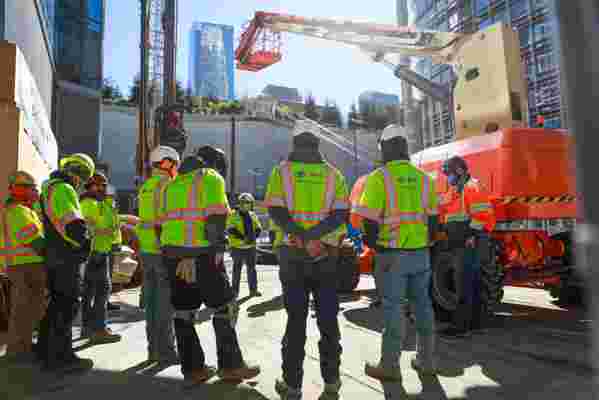San Francisco’s Luxurious New Skyscraper Is Tilting 26 Inches
What’s the 14th-century Leaning Tower of Pisa to impress with its tilt when there’s a modern-day building that slants even more? San Francisco’s Millennium Tower , one of glitziest residential buildings in the city, is now tilting more than two feet north and west and continues to tilt at a rate of three inches a year because it’s sinking into the ground. In fact, it has already sunk between 17 and 18 inches. If the problem isn’t fixed, the building could eventually tilt 40 inches, the maximum it needs to function and most probably for the elevators and plumbing to work.
Located in San Francisco’s financial district at Fremont and Mission Streets and next to the Salesforce Transit Center and a bus terminal, the Millennium Tower is a 58-story, 645-foot-tall tower, and it is the tallest residential building in the city. It debuted with fanfare in 2009 and has a fair share of illustrious residents including sports figures Joe Montana and Giants outfielder Hunter Pence.
In a contradiction that defies improbability, data shows that around 10 inches of the overall 26-inch tilt happened last year following work to stop the sinking. In an investigative report , NBC Bay Area revealed that drilling logs show a gap of one to four days between drilling and grout installation. In the article, the NC Bay Area stated, “While Millennium fix officials discounted the issue to authorities, some outside experts say such delays in grouting could very well explain the comparatively rapid settlement and tilting that occurred during pile installation in August.”

Construction crews gather for a meeting as they work at Millennium Tower to stabilize the foundation of the 645-foot tower.
The fix engineer, Ron Hamburger, has admitted that his team didn’t guide the contractor they hired, Shimmick Construction, on how to stop the tower from sinking and titling as they drilled and dug into the ground. He told city supervisors , “The procedures for installing piles were basically the contractor’s prerogative.”
“We did not tell them how to install piles,” Hamburger continued. “We specified that we needed piles of a given diameter and strength. And he basically did those as a design build to install the piles in which he determined the methods by which he would install them.”
At this point, according to Hamburger, installing 18 steel pipes to bedrock 250 feet underneath the tower is the best way to halt—and maybe even reverse—some of the tilting. “The building does continue to settle at a rate of about one-half inch per year and to tilt at a rate of about three inches per year,” Hamburger said in a public statement. “It is doing this whether we are conducting work at the site or not,” he continued. “Although the building remains safe, we believe the project needs to resume construction and complete this construction quickly.”
The San Francisco Department of Building Inspection has approved Hamburger’s proposal to install the 18 pipes and plans to inspect them when the project is completed.